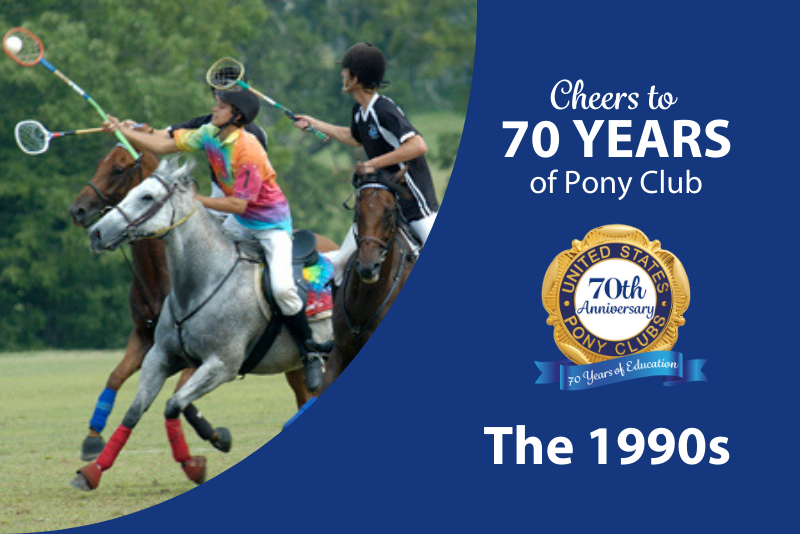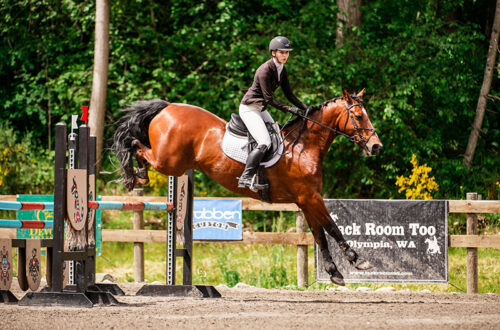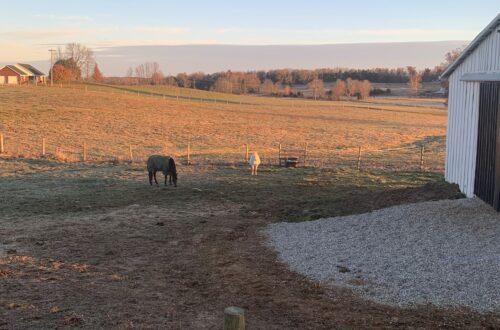
The Organizing Nineties for the United States Pony Clubs
Adapted from “A Story to Tell, The United States Pony Clubs, Inc. 1954–2004”
The final decade of the 20th century brought USPC into new headquarters with new funding, a new strategic plan, and the same timeless dedication to the well-being of the children and their horses for whom the organization was founded.
By mid-decade, more than 12,000 Pony Club members were served through close to 600 local clubs. Although the founders would have recognized the zeal, they would never have dreamed of their organization’s many and heady accomplishments.
Aggressive promotion, through a coordinated public relations program that used video production, helped spur enrollment and national awareness of USPC. The organization also adapted to changing social and demographic forces in the culture, where more single-parent families meant fewer volunteers to help guide the members.
Introducing the USPC Annual Fund
To help maintain a balanced budget while continuing to offer such a broad array of services and events, USPC began an annual giving program in 1990 under the guidance of Board of Governors member Robin Lightner. Pony Club members, parents, friends, associates, and businesses were encouraged to contribute to the USPC Annual Fund, just like they are today. Pony Club leaders and families already gave generously of their time and effort, but the time had come to appeal for additional funding. In its first year, more than 500 individuals and businesses supported the drive. This allowed the organization to maintain its financial stability in all operations.
Emphasis on Education
USPC’s emphasis on safety continued under the guidance of President Melanie Heacock. In 1991, USPC became the first equestrian organization to establish a standing safety committee. At that time, Doris Bixby Hammett began to publish an annual study of inquiries that occurred in USPC activities, and Dorothy Renfro created a safety slideshow that traveled throughout the country, educating children of all ages.
The mid-1990s saw the publication of the three-volume USPC Manuals of Horsemanship by author Susan E. Harris and editor Ruth Ring Harvie. These manuals were quickly adopted as standard reference texts by many equestrian organizations and their members.
At the fourth USPC Festival in 1992, more than 4,000 participants assembled for the various competitions, activities, and displays. Along with the popularity came feature articles about USPC in Sports Illustrated for Kids and SPUR Magazine. In 1993, the National Testing Program included an all-time high of 385 candidates.

Photo from the United States Pony Clubs Archive
Celebrating Leadership and Achievement in USPC
Leadership is a one of Pony Club’s core values, and in 1998, the USPC National Youth Congress (NYC) was established in order to recognize outstanding Pony Club members and build on the leadership skills instilled through the Pony Club program. The NYC provides intensive leadership training for members ages 18–23 who have attained a national Certification (C-3 or higher).
In 1999, the USPC Academy of Achievement was founded to honor Pony Club alumni for outstanding achievement in their chosen fields of expertise. Each year during the USPC Convention, the new Academy of Achievement honorees meet with the National Youth Congress delegates to provide mentoring and share their expertise through group projects designed to further personal development and leadership skills.
A Strategic Plan for USPC’s Future
As USPC approached its 40th Anniversary, the volunteers serving on the board began to grapple with the traditional means by which the organization was run—board involvement. The growth had been stellar, the results so amazing, that USPC faced a need for change—one in which more of the day-to-day support operations would be taken over by paid professional staff.
Cindy Piper, USPC President from 1995–1997, joined the board in 1985 and immediately became Vice President for Strategic Planning. Continuing the strategic planning process that was begun in 1985, a new strategic plan was completed and unveiled in 1995, calling for significant governance changes among other recommendations. One outcome was the Program Administration Council (PAC), a means to set policies and delegate their implementation to staff without hovering over their work.
Attitudes changed, though slowly. Amidst a fair amount of uncertainty, USPC’s Board disengaged from the minute aspects of the day-to-day and viewed the bigger picture. Piper guided the group through that change.
In 1993, USPC moved its national headquarters to a rented building in the Kentucky Horse Park. In 1996, the Task Force for the 21st Century, begun the prior year under former President Melanie Heacock, issued its final report and recommendations. One of the most significant findings of the Task Force was that the greatest threat to the future of Pony Club was the steady decline in open riding land.
The threat was so alarming that three members of the task force (Heacock, Georgiana McCabe, and Anson W. H. Taylor, Jr.) established a separate non-profit, EqueServe (now called the Equine Land Conservation Resource or ELCR) to provide education and technical support to equestrians working to preserve riding land and access.
As USPC entered the final years of the 1990s, office computerization, database management, and website and internet capabilities added yet another level of access to members and professionalism to an organization about to enter a new century. The USPC website www.ponyclub.org premiered in 1997.
In 1998, President Emsie Parker made outreach her Pony Club mission. She developed people as Pony Club liaisons to the many adjunct horse organizations. This positioned Pony Club to continue to represent itself as “the educational arm of the horse industry,” offering program and structure to others.
Also in 1998, USPC broke ground for a new headquarters building at the Kentucky Horse Park.
USPC Presidents during the 1990s:
- Robert J. Kutil
- Melanie M. Heacock
- Cynthia S. Piper
- Emsie M. Parker
Support the Future of the United States Pony Clubs
In honor of USPC’s history, consider showing your support with a gift to the Annual Fund. A gift of any amount helps ensure the future of Pony Club’s mission for generations to come.
In addition, help us fundraise by starting a Facebook Fundraiser. All proceeds go towards the United States Pony Clubs Annual Fund.
To order the limited-edition USPC 70th Anniversary commemorative pin, visit https://shopponyclub.org/products/pin-70th-anniversary.





